Tongue diagnosis, also known as Wang She (望舌), is an important method for understanding the physiological functions and pathological changes of the body through the observation of tongue appearance, used for diagnosing and understanding diseases.
During tongue diagnosis, observations are made in the order of tip – middle – root – sides. First, examine the tongue body, then the coating, for about 30 seconds. If the initial observation is unclear, allow the patient to rest for 3-5 minutes before re-examining.
Below is a collection of commonly seen tongue coatings in clinical practice, compiled for your reference.
Tongue Shape and Surface
1Red Dots on Tongue – Excess Heat Accumulation
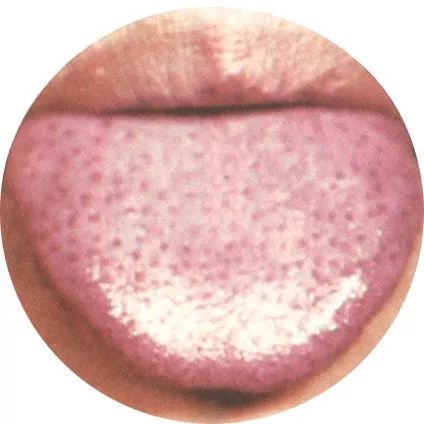
Red dots or prickles on the tongue indicate excessive internal heat.

Red dots or prickles on the tip, middle, and sides of the tongue represent excess heart fire, gastrointestinal heat, and liver-gallbladder fire, respectively.
2Cracked Tongue – Deficiency of Essence and Blood
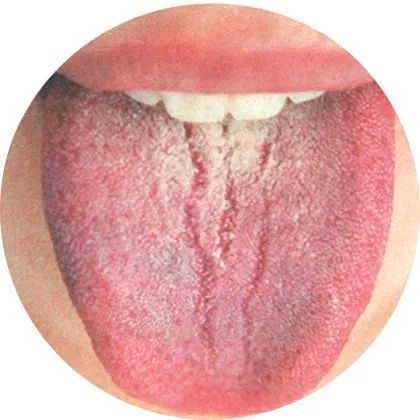
Cracks on the tongue are generally uncovered by tongue coating, indicating deficiency of essence and blood.
White tongue coating with cracks indicates essence and blood deficiency; a crimson dry tongue with cracks indicates heat damaging body fluids.
3Teeth Marks on Tongue – Yang Qi Deficiency
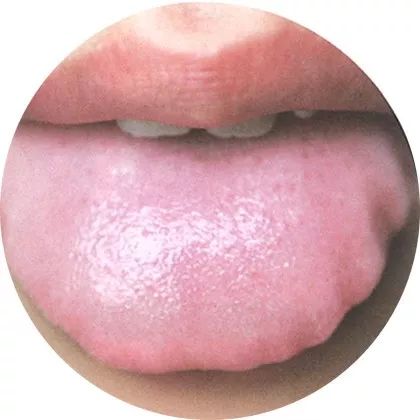
A pale tongue body with a pale coating indicates deficiency of spleen and kidney yang, with internal dampness and phlegm.

This tongue appearance is very soft, indicating deficiency of yang qi and decline in physical strength.
4Pale Tongue – Internal Deficiency of Yang
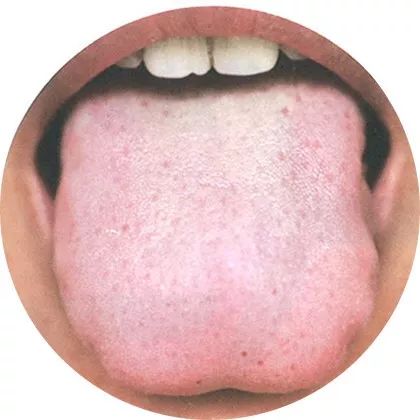
A pale and plump tongue indicates deficiency of yang qi; a pale and thin tongue indicates deficiency of qi and blood.

A pale tongue belongs to a tongue appearance of deficiency and cold.
5Red Tongue – Presence of Heat Evil
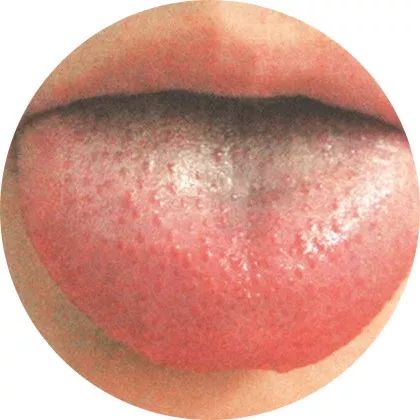
A red tip with prickles indicates heart fire rising; a red tongue with yellow and dry coating indicates internal excess heat; a red tongue body with little or no coating indicates yin deficiency with internal heat.

This is a primary heat syndrome, which may indicate excessive accumulation of heat in the body, while also observing if there are red dots on the tongue surface.
6Crimson Tongue – Strong Heat Evil
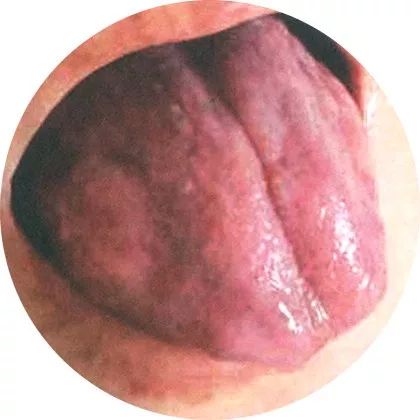
A red and dry tongue with prickles or cracks indicates intense internal heat; a red tongue without coating and smooth indicates exhaustion of stomach and kidney yin.
This tongue appearance reflects deep invasion of heat evil into the blood, usually indicating depletion of body fluids, with deeper colors indicating more severe heat evil and symptoms.
7Purple Tongue – Poor Blood Circulation
A bluish-purple tongue indicates poor blood circulation. A purple tongue with red indicates excessive internal heat accumulation.
Cold syndrome, heat syndrome, or blood stasis syndrome may present this tongue appearance, primarily caused by poor blood flow.
Tongue Size
1Fat Tongue – Internal Cold Deficiency
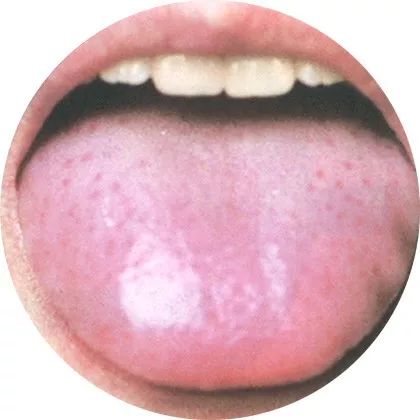
Pay attention to the color of the tongue, the coating, and whether there are red dots on the surface.

A yellowish tongue coating often indicates excess heat in the heart and spleen; a swollen tongue with a dark purple color often indicates blood stasis.
2Fat Pale Tongue – Weak Yang Qi
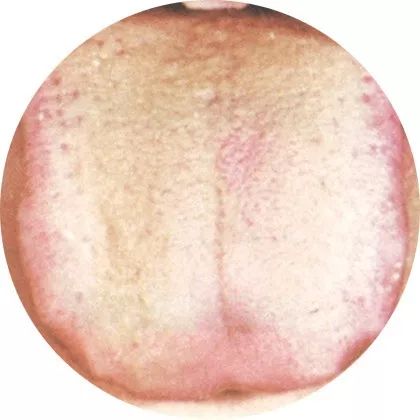
Due to weak yang qi, the warming and promoting functions are affected, leading to a reduction in the distribution of body fluids, resulting in a plump and pale tongue.

A fat pale tongue indicates weakness of yang qi and retention of dampness.
3Thin Red Tongue – Nutritional Deficiency
A red tongue indicates internal heat or inflammation, with prolonged heat damaging body fluids, leading to depletion of nutrition.
A thin tongue indicates a lack of nutrition and moisture in the body.
4Thin Pale Tongue – Deficiency of Qi and Blood
A thin pale tongue with obvious coating often accompanies mild colds or digestive issues, indicating a weak constitution.

This primarily reflects a pathological state of deficiency of both qi and blood, indicating malnutrition.
5Old Tongue – Confrontation of Zheng and Xie
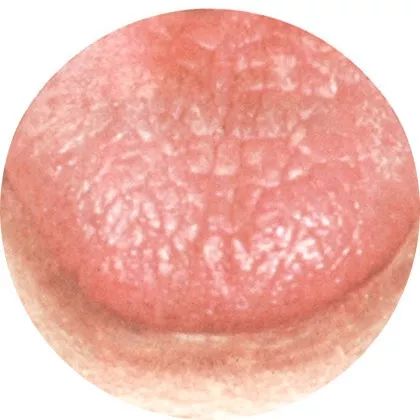
The tongue coating is yellowish-white or gray-black, indicating a predominance of excess syndrome and heat syndrome.

Old tongue is often seen in the stage of confrontation between Zheng and Xie, where the pathogenic qi is strong, but the body’s resistance is also strong.
6Tender Tongue – Low Metabolic Function
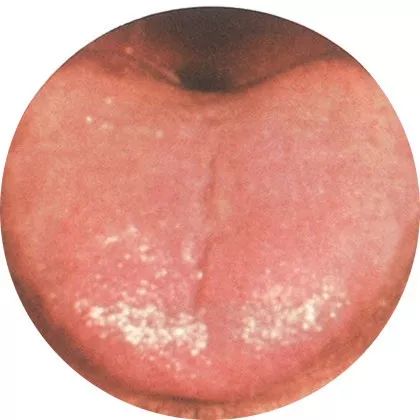
This often indicates deficiency syndrome, cold syndrome, or damp syndrome.

Individuals with weakened organ function, low metabolic function, or weakened resistance often present this tongue appearance.
Tongue Coating Thickness
1Thin Coating – Mild Condition
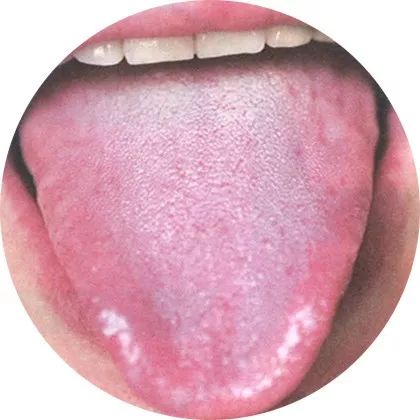
A thin white tongue coating with a light red tongue is a normal tongue appearance; a thin yellow coating primarily reflects the pathological characteristics of initial heat syndrome.
This indicates a normal tongue coating or an early stage of disease, or shows a mild condition.
2Thick Coating – Gastrointestinal Accumulation
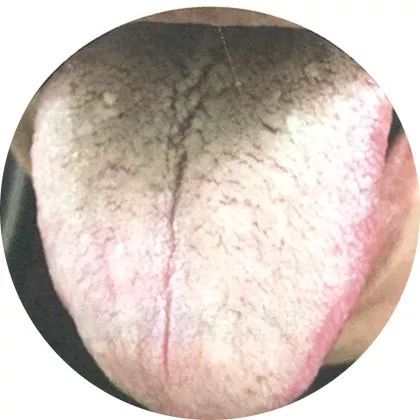
If the tongue is red, with a yellow, thick, and dry coating, it indicates excessive heat damaging yin; if it is a light red tongue with a thick, white, greasy coating, it indicates phlegm, dampness, or food stagnation.

This indicates a transition from a mild to a severe condition, or the presence of gastrointestinal accumulation.
3Dry Coating – Damage to Body Fluids from Vomiting and Diarrhea

If the tongue coating is merely dry and white, it indicates poor circulation of body fluids; if the coating is dry and yellow, it indicates excessive stomach heat damaging body fluids; if the coating is dry and black, it indicates extreme heat damaging yin.
This generally indicates high fever and damage to body fluids from vomiting and diarrhea. It is also important to check the color of the tongue itself.
4Rough Coating – Loss of Body Fluids
If the dryness in the body becomes severe, it raises concerns about chronic diseases such as hyperlipidemia and diabetes, and individuals with asthma may experience difficulty breathing.

This rough coating indicates a severe loss of body fluids.
5Slippery Coating – Lack of Vitality
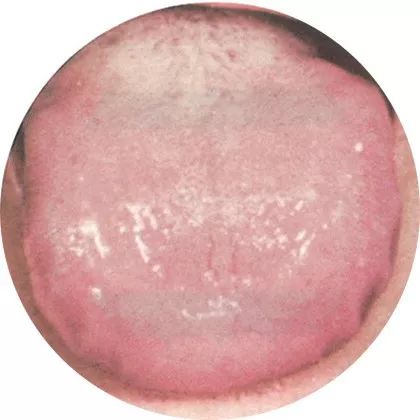
If the body is easily fatigued, lacks vitality, and feels weak, it indicates a state of various functional declines and reduced immunity.
This indicates deficiency syndrome and cold syndrome. It is also important to pay attention to the size of the tongue and the teeth marks on the edges.
6Greasy Coating – Accumulation of Dampness and Turbidity
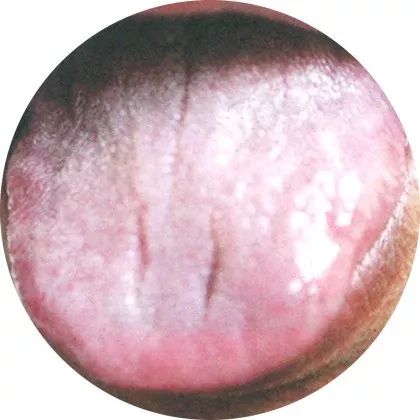
A white tongue coating that adheres to the surface of the tongue indicates internal cold and dampness; if the coating is yellow, it indicates damp evil or phlegm turbidity accumulating and transforming into heat.

This indicates accumulation of dampness and turbidity, with yang qi being restrained, primarily indicating phlegm dampness and food accumulation.
7Putrid Coating – Excessive Internal Heat
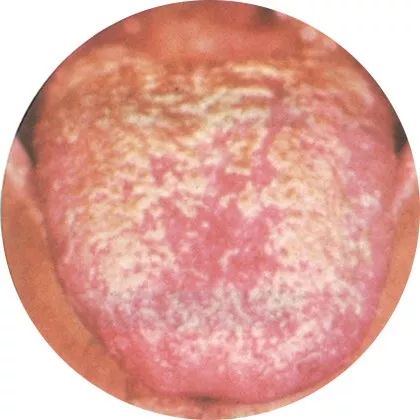
Be cautious of discomfort and infections caused by overeating.

This putrid coating is mostly associated with heat syndrome, primarily indicating food accumulation and phlegm dampness.
Tongue Coating Color
1White Coating – Damp Turbidity and Phlegm Accumulation
A thin white coating indicates a normal tongue coating or the initial stage of an exterior syndrome. A thin white and slippery coating indicates internal cold syndrome or dampness syndrome; a thin white and greasy coating indicates damp turbidity or phlegm accumulation.
Based on the moisture level and thickness of the tongue coating, it can be classified into thin white coating, white slippery coating, white dry coating, and white powdery coating.
2Yellow Coating – Transformation of Cold into Heat
A thin yellow coating indicates mild heat; a yellow coating indicates heavy heat; a scorched yellow coating indicates extreme heat; a yellow greasy coating indicates damp-heat syndrome.

Yellow coating indicates disease, primarily indicating spleen and stomach disease, internal syndrome, and heat syndrome.
3Gray Coating – Damp Turbidity Obstruction
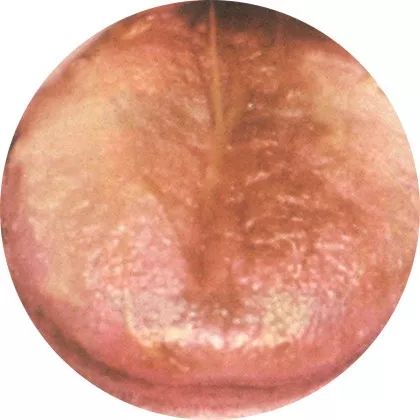
Once the tongue coating turns gray, it indicates that the disease has taken root in the body, and the condition has become serious.

A gray-white coating indicates cold dampness or damp turbidity obstruction; a gray-yellow and dry coating indicates internal heat, damaging body fluids.
4Black Coating – Intensified Evil Heat
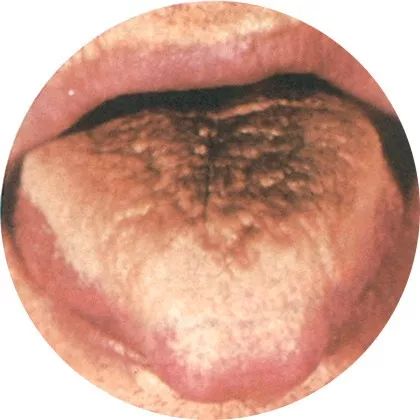
A black dry coating indicates the influence of chronic diseases and inflammation; a black greasy coating indicates excessive accumulation of heat evil and dampness in the body.

A black coating indicates a more severe condition or a trend towards chronicity.
1. Typical Tongue Appearance of Qi Deficiency Constitution
1Pale Fat Tongue with Stasis Dots
Tongue Quality: Dull and fat
Tongue Coating: Thin
Tongue Surface: The front half of the tongue has obvious stasis dots

This tongue appearance is often seen in patients with fatigue, easy exhaustion, cold intolerance, and abdominal distension due to weak transformation.
2Dull Tongue, Thin Greasy Coating
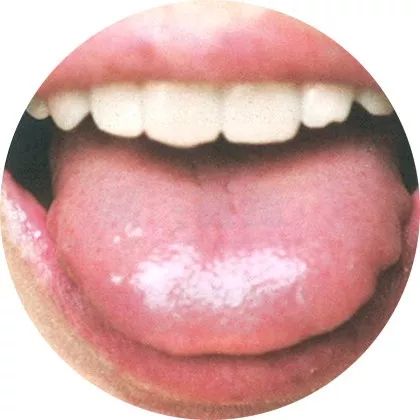
Tongue Color: Dark Red
Tongue Coating: Thin Greasy Coating
Tongue Surface: Moist
This tongue appearance is often due to deficiency of vital qi and poor transformation in the middle jiao. Patients may experience general fatigue, memory decline, poor appetite, and abnormal bowel movements.
3Fat Tender Tongue, Mirror-like
Tongue Color: Slightly Red
Tongue Quality: Tender
Tongue Body: Fat
This tongue appearance is typical of both qi and yin deficiency, and such patients may experience fatigue, shortness of breath, mental fatigue, and poor digestion.
4Pale Dull Tongue with Stasis Dots
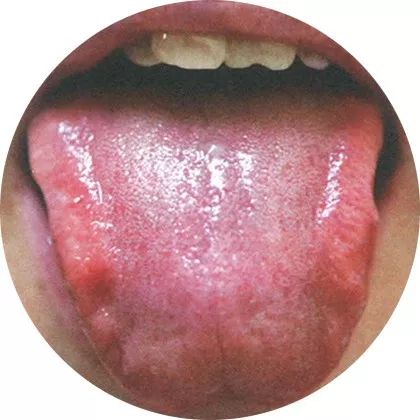
Tongue Quality: Dull
Tongue Coating: Few and Thin White
Tongue Body: The tip of the tongue is red with slight stasis dots

This tongue appearance is called a dull tongue, and clinically, it is often due to complex conditions leading to long-term deficiency of both qi and blood.
5Pale Fat Tongue with White Coating
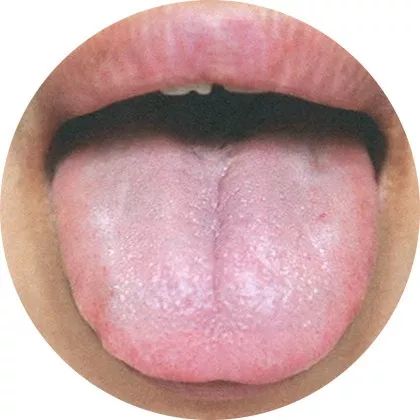
Tongue Body: Pale and Large
Tongue Quality: Tender
Tongue Coating: White

This tongue appearance is often caused by qi deficiency, leading to lung and spleen qi deficiency, resulting in a tender and fat tongue with a white coating.
6Pale Fat Tongue with Teeth Marks
Tongue Quality: Pale
Tongue Coating: White
Tongue Body: Fat with Teeth Marks on the Edges
This tongue appearance is often seen in sub-healthy individuals. Patients may experience indigestion, fatigue in the limbs, and unformed stools.
7Pale Red Tongue with Stasis Dots
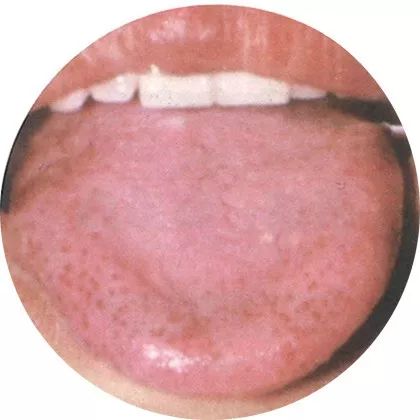
Tongue Quality: Pale Red
Tongue Body: Slightly Fat
Tongue Tip: Has scattered stasis dots

This tongue appearance is often seen in chronic consumptive diseases, resulting from long-term deficiency of vital qi and blood stasis.
8Pale Red Tongue with Thin White Coating
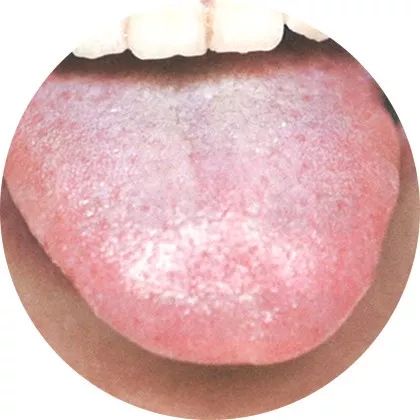
Tongue Quality: Pale
Tongue Coating: Thin and White
Tongue Body: Thin
This tongue appearance often indicates weakness of spleen qi, combined with weakness of middle qi, leading to poor blood regulation. Patients with this tongue appearance are prone to fatigue.
9Pale White Tongue with Tender Quality
Tongue Color: Pale White
Tongue Quality: Tender
Tongue Coating: Thin
This tongue appearance is often seen in individuals who are overworked, under stress, or have poor spleen and stomach function.
10Pale Red Tongue with Thin White Coating
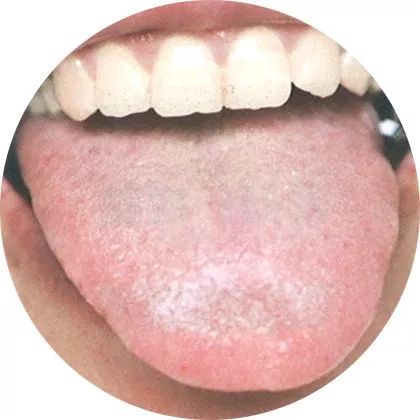
Tongue Quality: Pale Red
Tongue Coating: Thin and White
Tongue Surface: Relatively Moist
This tongue appearance often indicates a weak constitution with qi deficiency, external invasion of wind-cold, and poor lung qi regulation.
11Dark Red Tongue with Yellow Greasy Coating
Tongue Quality: Dark Red
Tongue Coating: Yellow Greasy
Tongue Body: Tongue edges have teeth marks
A yellow greasy coating with teeth marks indicates heavy phlegm dampness and a tendency to transform into heat, with teeth marks located at the back of the tongue indicating a lower jiao condition.
12Thin Red Tongue with Yellow Greasy Coating
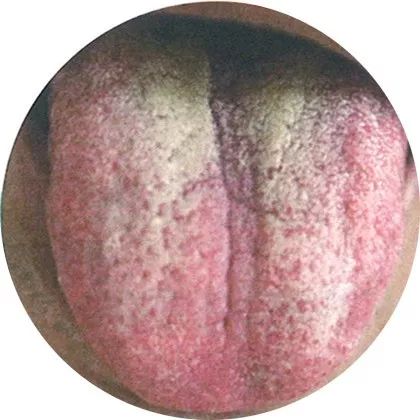
Tongue Quality: Thin Red
Tongue Coating: Yellow Greasy
Tongue Body: Has teeth marks
This tongue appearance often indicates a tendency towards heat accumulation, with symptoms such as irritability, insomnia, and dry stools.
13Dark Red Tongue with Yellow Greasy Coating
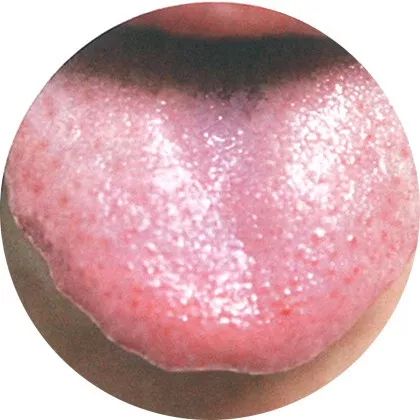
Tongue Coating: Thin, Yellow Greasy
Tongue Quality: Dark Red
Tongue Body: Has teeth marks
This tongue appearance often indicates abdominal distension, belching, and symptoms of irritability and anger.
8. Special Constitution Tongue Appearance
1Teeth Marks Tongue with Thick White Greasy Coating
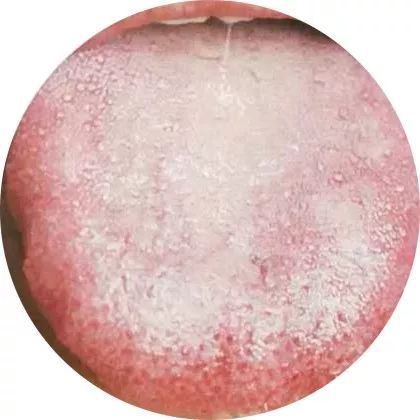
Tongue Quality: Dull, slightly red
Tongue Body: Fat
Both sides of the tongue: Have teeth marks

This tongue appearance is often seen in patients with oily skin, prone to acne, with symptoms of dry mouth, fatigue, and poor digestion.
2Red Tongue with Little Coating
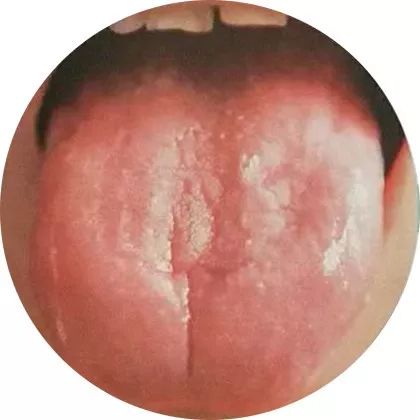
Tongue Coating: Little
Tongue Quality: Dark Red
Tongue Surface: Has cracks

This tongue appearance often indicates low-grade fever, heat in the palms and soles, afternoon tidal fever, night sweats, dry mouth, and insomnia.
Source: Grassroots Physician Community
 Scan the QR code
Scan the QR code
to learn more about grassroots medical information

